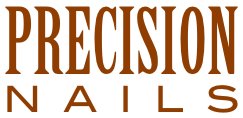What makes a nail salon "green?" Depending on who you ask, it could be the salon building, the environment in which professionals provide nail services, and/or the services and products themselves. There isn't enough space in this article to explore all the possibilities; however, certain examples are worth presenting to encourage other salon owners and beauty professionals to do extensive research before investing themselves in this growing trend.
Before I proceed, let me qualify my position. Beauty is subjective; the rules governing the beauty industry are not. Even if we could agree on "best practices," the laws in our respective locations take precedence, no matter how expensive, impractical, unscientific, and/or obsolete. All salon owners and beauty professionals must comply with the minimum standards/regulations of relevant federal, state and local governmental agencies.
Beyond compliance, being "green" doesn't necessarily make a salon any more viable or the salon experience any better/healthier/safer for clients, salon workers or the environment. For example, let's consider LEED (Leadership in Energy and Environmental Design) certification of a building. The U.S. Green Building Council (USGBC), not a government agency, launched LEED in 1998 to rate and recognize "green buildings." A building project must "satisfy prerequisites and earn points to achieve different levels of certification" (Certified, Silver, Gold or Platinum). According to the USGBC website (www.usgbc.org/leed), LEED can:
- "Lower operating costs and increase asset value"
- "Conserve energy, water and other resources"
- "Be healthier and safer for occupants"
- "Qualify for money-saving incentives, like tax rebates and zoning allowances."
In an article dated December 15, 2011, Richard Best attributed his accomplishment to a collaboration between "An architect with sustainable design expertise and an ownership willing to walk-the-talk of green design and operations … An Eco-Dream Team was borne. . . . Forward-looking corporations and business owners – like The Rob B OPI Concept Salon and GS & MS Properties recognize the fiscal benefits of choosing to 'go green' with their buildings and operations, and they capitalize on green business branding which appeals to many of their clients and makes for happier, more productive workers."
I find Richard's statements amusing, especially in light of two specific blog posts Robbie wrote. In a post titled "Going Green" (June 22, 2007), Robbie announced his intentions to pursue LEED certification for his new salon, but questioned the architect's "green" credentials: "I don't think our architect, Richard Best, has ever built a LEED-certified building before, but he's jumped in headfirst with researching the requirements." A year later, in a post titled "So Close, Yet So Far Away" (June 25, 2008), Robbie lamented ongoing construction delays: "My architect, Richard Best, is MIA; he gave us a week's notice that he was leaving for Dubai to appear in a reality TV show. (I seriously couldn't even make this stuff up.) Lee Stucker, my contractor, has been forced to pick up the missing architect's slack."
A building may be "sustainable," but that doesn't mean that the business occupying the space will be. The salon located at 12246 Ventura Boulevard is no longer ROB|B Salon; currently, it's Pure Nails & Organic Spa with new ownership. The most recent developments haven't been addressed in the blog, though many readers would be interested in knowing what transpired and what lessons were learned.
As an individual tenant in a multi-tenant building, my new salon isn't eligible for LEED certification. That's not a problem because the more I learn about it, the less impressed I am: "Critics complain that the system can be gamed to garner the wonderful-sounding public relations that LEED certification often generates" (Daniel Brook, "LEED Compliance Not Required for Designing Green Buildings," Scientific American Earth 3.0 Special Edition, September 2008) and "Any building or rating system that does not make all energy use data public, and show substantial savings relative to comparable buildings, does not deserve to be called environmentally friendly, regardless of how many supposed "green" features are included" Henry Gifford, "A Better Way to Rate Green Buildings," www.energysavingscience.com.
Even without certification, I can be proud of what I've accomplished in my new salon with minimal investment:
- Prepared the space within two months of lease signing.
- Did not change the existing wood flooring; the previous tenant is a flooring contractor, and his products and workmanship are beautiful.
- Did not change the existing paint colors; they already matched my desired color scheme and the previous tenant left paint for touchups.
- Created private rooms with customized, temporary dividers.
- Invested nearly $1000 in EcoSmart LED bulbs to replace old bulbs in the recessed lighting. They were easy to install and should last 20 years.
- Installed the newest model of the Mitsubishi Jet Towel Hand Dryer.
- Donated excess building materials to Habitat for Humanity.
- Reduced my electricity costs to less than $100/month (using approximately 500 kWh in a space of 1100 square feet).
By Jaime Schrabeck, Ph.D.




